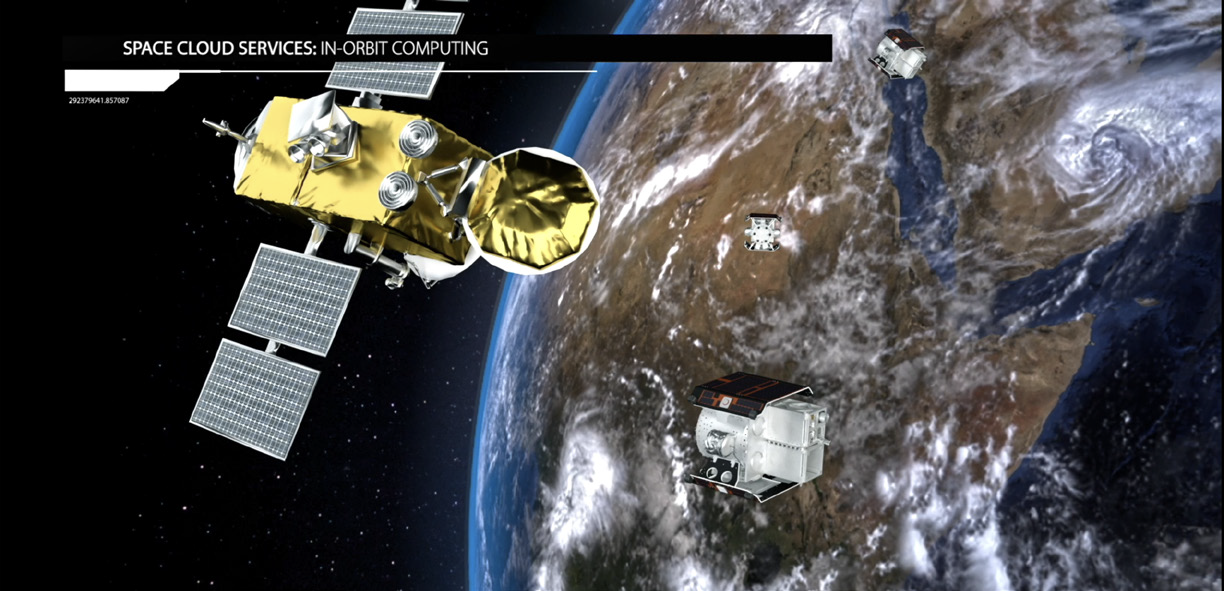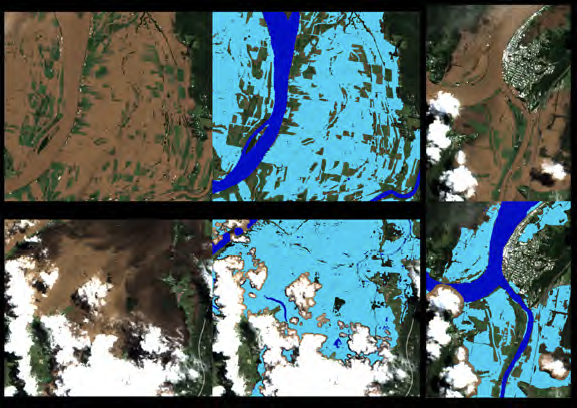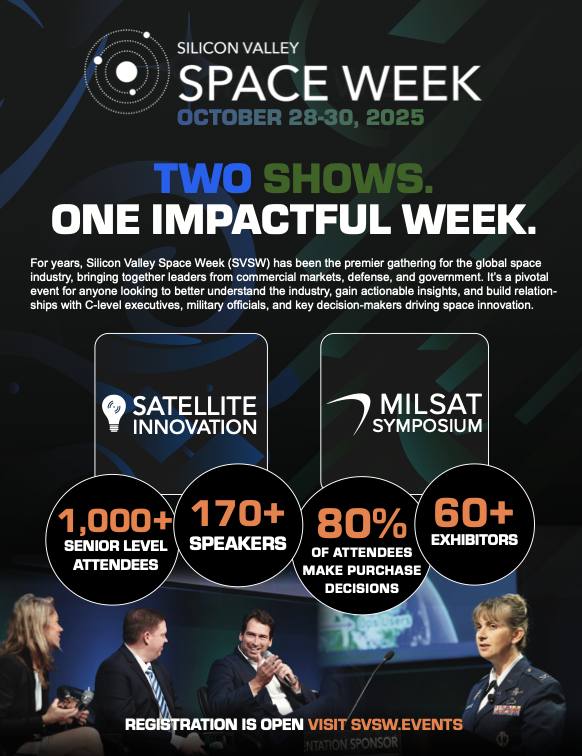Viney Jean-François Dhiri, Head of Business Development - Space Cloud Services
Decision intelligence is a disciplined approach to improving organizational decision-making that combines data science, artificial intelligence, and business processes. Rather than simply generating reports or dashboards, decision intelligence platforms analyze data to provide specific recommendations and, in many cases, automatically execute actions based on predefined criteria.

These systems have allowed companies to make processes, such ase fraud detection, supply chain optimization, personalized marketing, and risk management, less expensive and more efficient.
The decision intelligence market is expanding rapidly. According to Grand View Research, the global market reached $15.22 billion in 2024 and is projected to grow to $36.34 billion by 2030, with a compound annual growth rate of 15.4%.
Organizations are increasingly focused on transforming raw data into actionable insights that inform business decisions. While sophisticated algorithms, machine learning models, and analytics platforms play a key role in such applications, the biggest practical constraint is latency: the time required to collect data, process it into actionable instructions, and deliver them to their destination.
For time-sensitive applications, especially those requiring data fusion from multiple satellite sources, this latency can mean the difference between effective response and missed opportunities. In complex data processing pipelines, faster processing and more efficient algorithms may have negligible impact when data capture and transfer times are orders of magnitude larger.
Organizations have addressed this limitation through edge computing, a distributed approach that preprocesses data at the source to reduce information exchange. Edge computing emerged as a solution for real-time decision-making by bringing processing power to factories, retail stores, autonomous vehicles, and smart cities.
Surprisingly, space has not benefited from this approach, despite satellites generating vast amounts of data daily while remaining constrained by traditional ground-based processing workflows.

_______________________________________________
The Untapped Potential of
Space-Powered Decision Intelligence
_______________________________________________
The Earth Observation (EO) industry operates through a well-established value chain where midstream operations handle ground infrastructure, data reception, processing, and storage, while downstream services deliver specific solutions to end users. These applications span agricultural monitoring, disaster management, urban planning, and financial risk assessment, making this industry essential for informed decision-making across government agencies, commercial enterprises, and research institutions worldwide.
However, current EO applications face severe latency constraints. While satellites capture terabytes of data daily, downlink is constrained by limited bandwidth and ground stations’ visibility windows, creating processing delays from several hours to days.
By the time information becomes available, optimal response windows may have closed, particularly for applications where rapid response creates significant economic value. Agricultural monitoring algorithms might identify irrigation needs hours after crops have suffered stress. Insurance companies must rely on post-event analysis rather than real-time damage assessment. Environmental monitoring applications detecting oil spills or deforestation face the same constraint: delayed processing that limits responsive intervention.
The solution rests in extending cloud infrastructure beyond Earth’s atmosphere through always connected orbital compute centers. Like their terrestrial counterparts, these space-based computing nodes would provide shared infrastructure for multiple applications and users.
While orbital computing faces constraints that include power limitations and hardware lifecycle considerations, for applications where milliseconds matter in emergency response or financial decisions, these trade-offs become acceptable.
Downstream operators could deploy containerized applications directly to orbital platforms, enabling them to collect data at the source through intersatellite links, process information using onboard AI and machine learning algorithms, and downlink only essential actionable instructions to ground-based systems.
This architecture fundamentally transforms the traditional EOn workflow: instead of capturing terabytes of raw imagery for ground processing, orbital data centers would analyze data in real-time to extract essential insights and transmit concise, decision-ready outputs, while leaving computationally intensive operations to ground-based infrastructure where they’re most efficient.
The result is a dramatic reduction in latency from hours to minutes, enabling truly responsive Earth observation applications. Such orbital infrastructure would operate on a multi-tenant basis, allowing multiple organizations to share computing resources and benefit from economies of scale while maintaining data security and application isolation.
_________________________________________
Intelligence Logistics:
D-Orbit’s Vision for Space-Based
Decision Intelligence
_________________________________________
D-Orbit has been commercially providing these orbital edge computing capabilities through its Space Cloud Services since 2022, with integration capabilities that connect to established terrestrial cloud infrastructure providers.
ION Satellite Carrier’s in D-Orbit’s fleet host processing nodes that are capable of rapid deployment and execution of containerized applications from multiple clients simultaneously. The service provides a fully operational commercial platform that enables customers to deploy their decision intelligence algorithms directly to orbital infrastructure.

Applications can collect data from a variety of onboard sensors, such as D-Orbit’s multispectral camera, process this data using customer’s AI and machine learning algorithms, and transmit actionable results directly to customer defined ground-based endpoints or through internet-connected intermediaries.
Continuous upgrading of the nodes will introduce the capability, in the short term, to receive information from other satellites through intersatellite communications, while offering significantly enhanced computing power with multi-core CPU performance exceeding 50,000 CoreMark and accelerated processing capabilities reaching 4 TOPS for specialized AI workloads.
These improved capabilities will enable D-Orbit’s Intelligence Logistics service, which addresses the challenge of coordinating multiple data sources by leveraging standardized access to diverse space assets. Through their constellation of advanced computing nodes integrated into D-Orbit’s satellite fleet, organizations can establish data processing workflows that combine information from D-Orbit’s onboard sensors with feeds from third-party sensors in-orbit and in-situ on-ground, using industry-standard protocols to create unified data resources.
The computing nodes operate as orbital data fusion centers, where raw information from diverse satellites undergoes customer-developed AI processing to generate actionable intelligence. Rather than downlinking separate data streams for ground-based integration, this approach enables data combination and analysis at the point of collection. Processed results are then routed to their intended destinations—terrestrial networks, other space assets, or automated systems—based on customer enterprise operational requirements. Organizations access these capabilities through subscription arrangements, allowing them to deploy orbital processing applications without managing the underlying space infrastructure.
_________________________________________
Responsive Space:
Multi-Source Intelligence Fusion
_________________________________________
This architecture is the first step toward the vision of a responsive space infrastructure able to collect data from EO satellites, weather satellites, communications systems, and other assets, combine it in real-time, and process it through multiple agents to produce targeted instructions delivered to their required destinations. This integrated orbital intelligence network can simultaneously address diverse applications—from disaster response and environmental monitoring to maritime surveillance and supply chain optimization—all operating from shared data collection while generating customized outputs for different stakeholders.
RSS-Hydro, a Luxembourg-based provider of flood detection algorithms, recently completed an initial validation demonstration on D-Orbit’s orbital infrastructure as a first step toward operational deployment. Using their established FloodSENS algorithm, RSS-Hydro successfully processed both SAR and optical satellite imagery of the 2023 Somalia flooding directly in orbit—marking the first time multiple data types have been processed simultaneously in the same orbital location. The demonstration generated actionable flood intelligence in minutes using pre-loaded datasets, validating that ground-proven algorithms could operate effectively in the orbital environment.
This validation demonstrates RSS-Hydro’s broader vision of transforming disaster response from reactive to proactive. Their FloodPin service, currently under development through ESA-backed projects, envisions a system able to generate flood warnings within minutes of satellite observation, enabling emergency services to issue evacuation orders while communities still have time to respond safely.
The orbital approach also enables continuous monitoring of remote regions where ground-based sensors are impractical, extending flood intelligence to vulnerable communities that previously lacked early warning capabilities.
RSS-Hydro’s vision includes creating “wired waters”—a comprehensive orbital intelligence network that can simultaneously track flood risks, water quality, and ecosystem health across multiple satellite data streams, moving from downloading terabytes of imagery for ground analysis to satellites that function as intelligent nodes delivering only the actionable insights needed for decision-making.
_________________________________________
The Next Frontier:
Operational Orbital Intelligence
_________________________________________
D-Orbit’s commercial approach has validated the operational viability of orbital edge computing, on-board autonomy and space-domain awareness, with clients testing and deploying real-world applications ranging from flood detection to environmental monitoring.
This orbital infrastructure serves applications that extend well beyond traditional Earth observation, encompassing real-time maritime tracking, space traffic management, and multi-source intelligence fusion that combines satellite data with terrestrial sensors.

The urgent demand for timely, accurate insights from space-based data sources has made orbital processing infrastructure essential for informed decision-making across government agencies, commercial enterprises, and research institutions worldwide.
As organizations increasingly recognize that the optimal location for processing space-generated data is in space itself, we are witnessing the emergence of a new approach where decision intelligence applications migrate to orbit not because it represents cutting-edge technology, but because it simply delivers superior operational performance.

Viney Jean-François
Dhiri
The convergence of cloud computing capabilities with space infrastructure marks the natural evolution of decision intelligence into its most effective deployment environment. As this orbital edge computing ecosystem matures, it promises to transform how organizations respond to time-critical challenges, moving from data-rich but insight-poor operations to truly responsive intelligence systems that deliver actionable information precisely when and where it matters most.
dorbit.space



